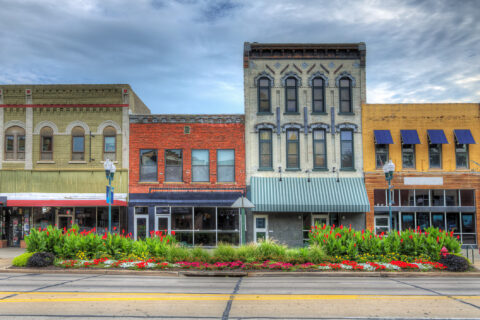Community development leaders continuously balance resource, budget and land constraints. While smart city practices are still relatively new in city government, there are many practical applications for cities invested in advancing equitable community development. Contrary to popular belief, “smart city” projects often do not require a large investment in new technology or big data — there are many low-cost and low-tech ways to improve resource allocation, service delivery and improve residents’ lives.
But while smart cities and data have the potential to improve residents’ lives, it is important not to lose sight of the importance of resident feedback, otherwise known as qualitative data. The stories that people share are critical for contextualizing data and can reveal insights that are otherwise difficult to capture through numbers alone. Data findings are also not always objective, and qualitative data can help spotlight human-biases that get replicated in data analyses.
The examples presented in this blog are relevant to any local government looking to find stepping stones toward using smart city practices to build more equitable communities.
Smart Practices & Recommendations
Recommendation 1: Ground smart city practices in a community engagement process
Involve community members early in the planning process. Carefully planned conversations can help cities build trust, in particular with low-income residents and Black, Indigenous, People of Color who may have been targeted by extractive research practices in the past.
Collaboration with residents and other community organizations can help cities design smart city projects to collect and use data in ways that support low-income residents and communities of color, rather than harm them. For example, Portland, OR created the Smart Cities PDX Framework that mandates that all future smart city projects must benefit marginalized communities, feature community engagement processes, and publish resources to help residents understand and provide feedback on the project.
Little Rock, AK has made community engagement a central component of its efforts to create a “data house” that leverages open data to drive performance measurement. One project that stands out is Little Rock’s effort to address public safety concerns. While the Little Rock team assumed 12th Street faced the most accurate need, digging into the data showed that the neighborhood with the highest level of crime and blight was actually a few blocks away in Midtown. Equipped with the knowledge of where to go, the city took to Midtown to give residents the opportunity to self-prioritize their concerns. By listening to the community, the city learned that residents’ number one priority was broken streetlights. The Mayor’s office has also been able to compare crime data with other factors such as food desert areas, income levels, abandoned properties and historical disinvestment to develop wraparound service programs and guide community investment.
Recommendation 2: Target lower-technology, higher-impact projects
Smart city projects need not require large investments or ground-breaking technologies. Low-tech efforts such as consolidating existing data sources between departments or analyzing free-to-access data can help cities improve service delivery.
New Orleans, LA created a model to predict which areas of the city have homes that are least likely to have a smoke detector and most vulnerable to fire fatalities using data from the American Housing Survey and American Community Survey (ACS). New Orleans prioritized these areas for its free smoke detector program. This strategy did not require any new data collection or technological investment, yet it improved program efficiency, helping the city distribute 8,000 smoke detectors to residents needing them most.
Baltimore, MD mapped existing and publicly available data to guide place-based investments to increase affordable housing and support local businesses in some of the city’s most vulnerable communities. The city consolidated data such as sale history, permit and citation history, rental licensing status, zoning and ACS demographic data to help the city understand development trends. The publicly accessible map, CoDeMap 2.0, helped the city focus efforts on at-risk neighborhoods and identify areas where investment might be most beneficial. Proximity to hospitals and schools or redlining history are characteristics Baltimore prioritized. The city has also held over 20 training sessions with city staff and residents and created a user guide to help stakeholders understand how to use the map too.
Recommendation 3: Close the digital divide to help residents take advantage of smart city tools and data
The digital divide refers to the gaps in access to digital technologies and education. Digital literacy training and expanding access to computers, smartphones and broadband can help more residents use and understand smart city tools and data, making smart city projects more transparent. Addressing the digital divide can help those with poor access to technology and limited knowledge of how to use technology take advantage of services, employment opportunities and information that have moved online. Expanding digital access can also help a larger range of residents use and provide feedback on smart city initiatives, helping projects better integrate residents into smart city decision-making.
Chattanooga, TN took steps to advance its community development goals of closing the physical barriers of the digital divide. By partnering with the Electric Power Board of Chattanooga, Chattanooga has been a leader in providing low-cost, high-speed internet to residents and increasing the number of digital hotspots in the city, especially during the pandemic. Another cornerstone program is HCS Connect which distributes free internet to low-income students. The government partnered with the Enterprise Center on Tech Goes Home Chattanooga, a program that has provided more than 5,500 individuals with digital skills training and subsidized computers and tablets. The program includes specialized curricula for those who may face additional barriers to technology use such as the elderly, those who are hard of hearing and people with low vision.
Recommendation 4: Establish formal data governance procedures to build trust with residents and internal efficiency
A data governance procedure is a formal framework that guides how data is used and managed by an organization. Data governance procedures can create repeatable processes for data use, detail how data will be protected and describe how data collection and usage will benefit stakeholders. Creating a data governance procedure does not require a city to increase its data collection or analysis capacity. It allows a city to set the groundwork for all current and future data-related initiatives, no matter the scope.
Columbus, OH created a Data Management Plan for their Smart Columbus program to specify the scope and purpose of data collection in addition to how they would protect the data. Smart Columbus has included a variety of projects, including efforts to expand and optimize public transit service and micro-mobility options. The Data Management Plan frames how data should be shared, organized and used to create standards across the government and make residents aware of how their data is collected and managed. Columbus’ smart city projects include evaluations to ensure that the data privacy, security and confidentiality standards detailed in the Data Management Plan are maintained.
What is Next for Cities?
Cities should work toward ensuring that smart city projects advance racial equity and justice goals. Cities should take steps to ensure that stakeholders can understand and benefit from the results of local efforts, whether that be data analysis to allocate community development funds or a large-scale project to retrofit homes. Residents should be partners is smart city projects. Within this framework, lower-investment, lower-technology projects are great stepping stones toward using smart city practices to build more equitable communities.
About the Author:
Amit Cohen is an intern on the Housing & Community Development team at the National League of Cities.









